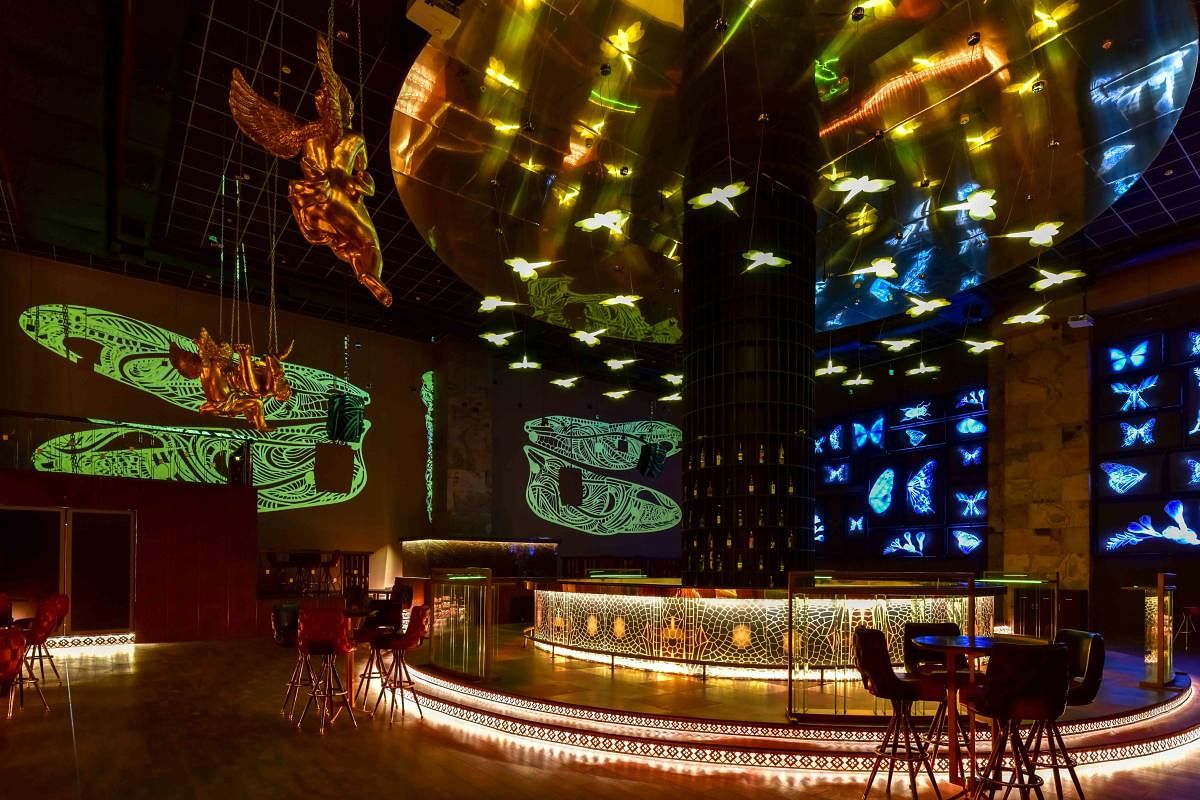
Rarely do we not look into our smartphones for photos and reviews of a restaurant we want to try out these days, isn’t it? That’s because we want a place that elevates our experience rather than one that just serves food. Little wonder then that restaurants are now pulling out all stops to create special concepts that are modern, creative and big on wowing diners.
It’s the nature of design to be fluid, to evolve into something else from time to time. Whether it is clothing or buildings, homes or restaurants, change is constant. A point that finds acceptance from one of India’s top hospitality designers, Sumessh Menon, whose body of work is seen in many cities in India and abroad. While his team works at a furious pace to complete some breweries and bespoke restaurants for Bengaluru, we spoke with the man about some of his creations and some design trends to watch out for in the hospitality sector.
Casual decor is in
Sumessh loves global, modern and elegant designs that are tailored to suit the client’s needs. The spaces he has created have warm and inviting interiors, which still manage to draw attention to many elements that impart a cool, casual vibe. He is very clear he does not want to be in the luxury segment. “Personally, I like to create spaces where the interiors complement the dining and not take away attention from the table. That is at the core of my designs. In restaurants in New York, including Plan B tapas bar, which I have created, the chef is the front page hero along with the food he creates. People know him, just like a DJ who can make or break a dance floor,” he says.
Sumessh has designed a variety of themed restaurants in India, New York and Dubai. Some of his creations in India include: Mizu, a Japanese bar and restaurant that displays modern Asian elements with bright interiors, a central piece which is a boat-shaped ceiling installation and patent cherry blossom prints on the backs of high bar stools; Koko 2.0, another bespoke Japanese restaurant, which has a huge community table set against a luxurious cladded wall with an absolutely stunning lighting installation made from banana paper; Seeds of Life, a vegan restaurant set up by a young entrepreneur in just a 500-sqft space where the interiors mirror the concept with potted plants and pleasing colour palettes; Dragonfly bar both in Delhi and Mumbai, with dragonfly prints and lights all over that lend an ethereal look to a very modern space, a centrally placed round-shaped bar with Italian marble, plush ante-lobby clad with dark mirror and lights in the form of dragonfly silhouettes.
While retaining uniqueness, each of Sumessh’s projects have his signature usage of natural stones, bespoke furniture, innovative lighting concepts, natural foliage, Instagrammable corners and elements like sculptures or artwork and a central theme that binds the restaurant space together. “Dragonfly in Mumbai was a million-dollar layout, so to speak. Since the client chose the name, we conceptualised everything around it — lights, décor, walls, motifs, even the bar apron is back-lit to reveal a stunning design that looks like the veins of the dragonfly wings. We also created a full-height X-ray wall showcasing random insects and plants,” he adds.
“I always insist on good lighting and automation that helps conserve energy and provides ease of functioning. We need to move with changing times and automation is a must,” Sumessh explains.
But this is an industry where failures happen too. How then can they withstand the test of time? “What we are seeing now is that gimmicky things are fading out, like artificial plants and flowers. Changes could be as small as a facade feature or an element like a large sculpture, creating drama with artwork on walls or using natural stone to change a corner or designing floors differently. Today, a place is judged heavily on social media. So clients want corners or passages that are Instagram-worthy, including toilets,” he explains.
Looks like gastronomes in India can look forward to many exciting experiences when dining out, never mind the quality of the food.